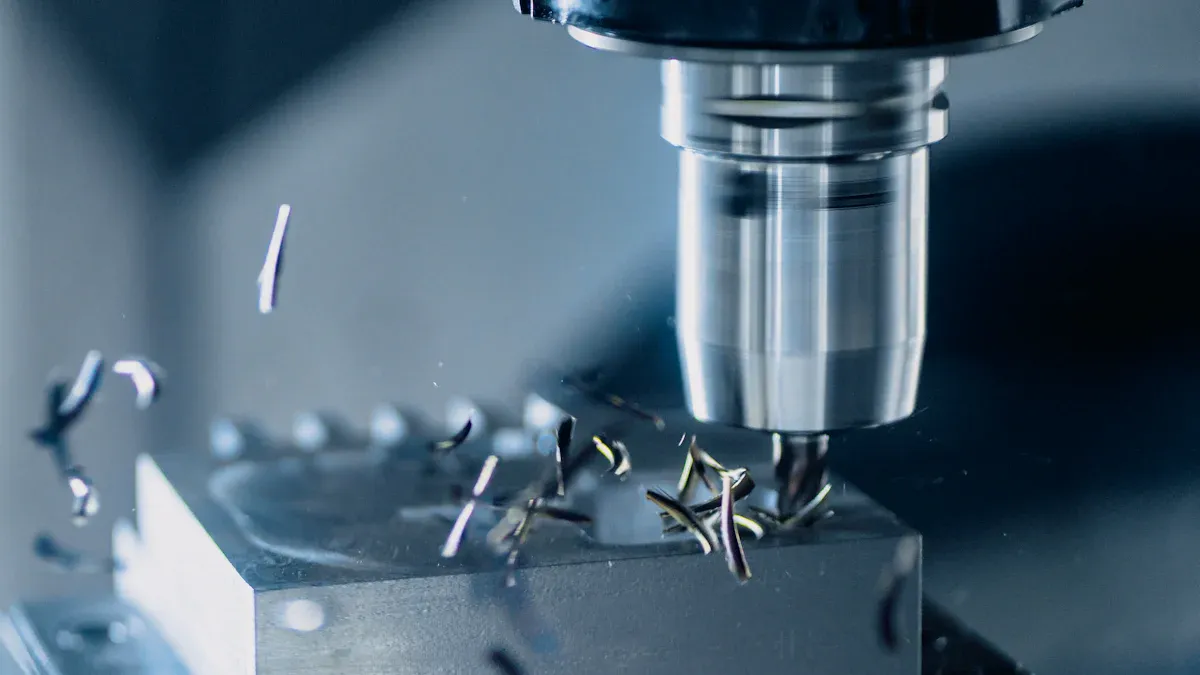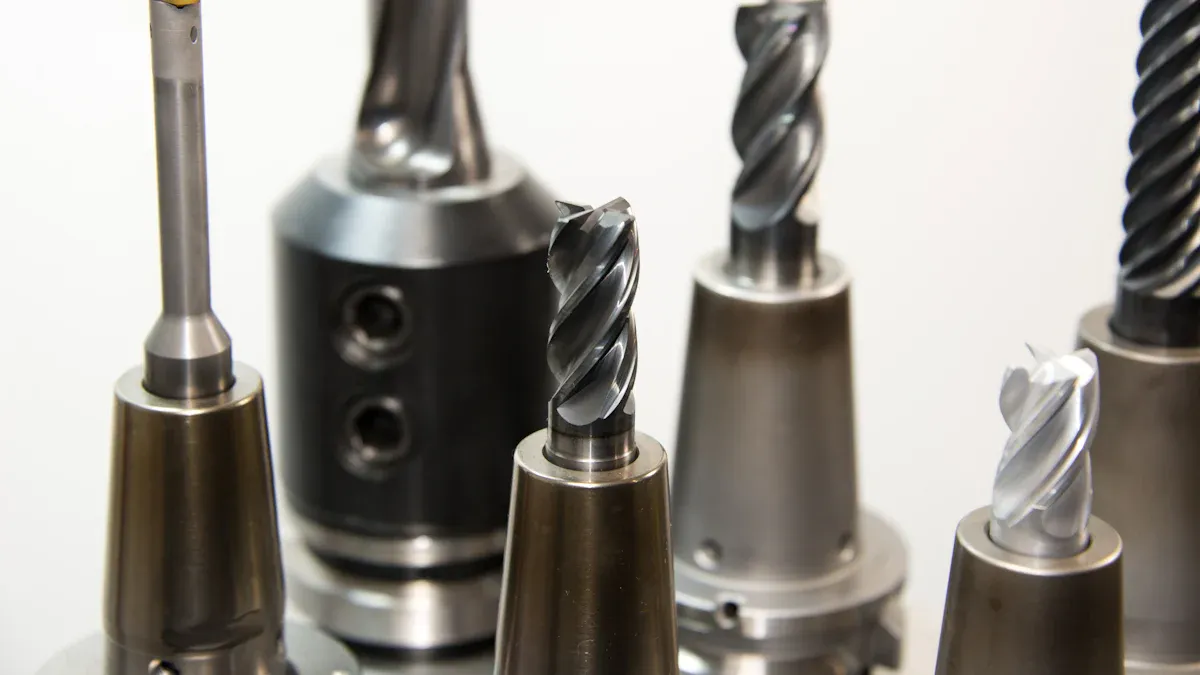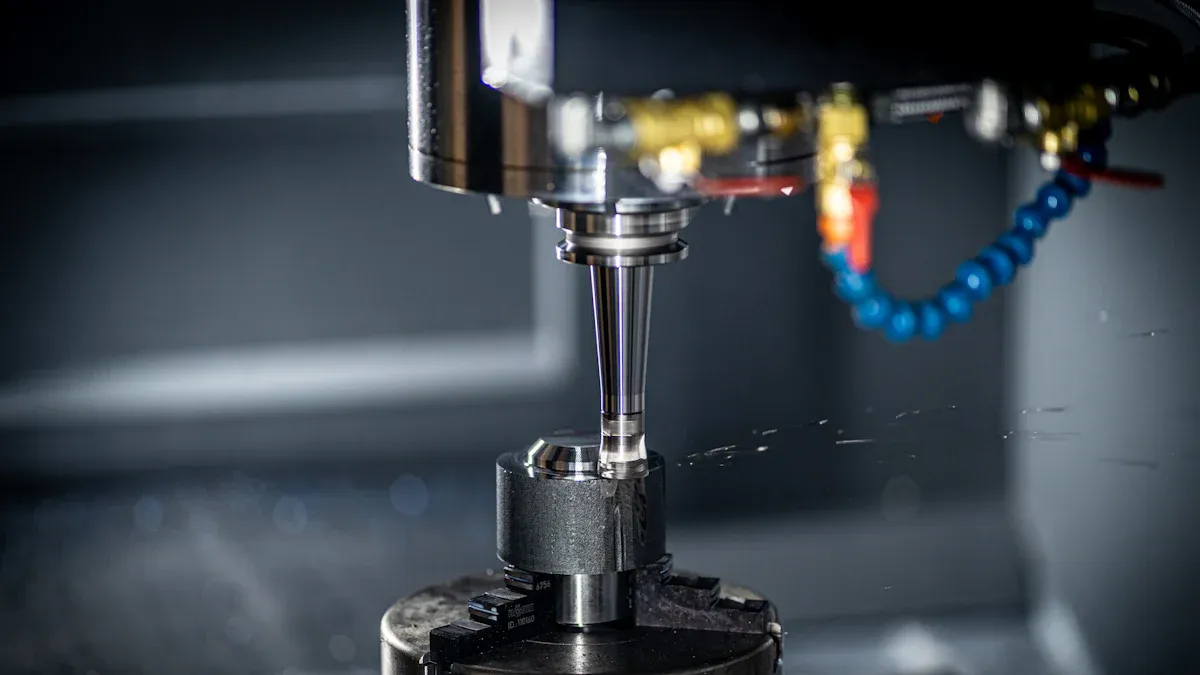
You rely on high-precision tooling to create brackets that meet exact specifications. This process ensures unmatched quality and durability. Precision reduces errors, prevents malfunctions, and enhances the lifespan of kitchen appliances. When you prioritize precision, you produce reliable components that help maintain customer trust and satisfaction.

High-precision tooling refers to the use of advanced manufacturing methods and equipment to create components with exceptional accuracy. This process ensures that every part meets exact specifications, leaving no room for error. In bracket manufacturing, high-precision tooling plays a critical role in producing reliable and durable components.
Precision tooling relies on strict quality control measures. For example, tools like Mitutoyo indicators help maintain tight tolerances, ensuring that each bracket aligns perfectly with its intended design. Tolerances, which represent allowable deviations from nominal dimensions, are a key aspect of high-precision tooling. While standard CNC machining tolerances are around ±0.127 mm, high-precision machining can achieve tolerances as tight as ±0.0254 mm. This level of accuracy ensures that brackets perform consistently, even under demanding conditions.
| Aspect | Description |
|---|---|
| Quality Control (QC) | Ensures manufactured products meet quality standards through testing against specifications. |
| Tolerances | High-precision tooling can achieve tolerances as tight as .0002 inches, ensuring product quality. |
| Measurement Tools | Tools like Mitutoyo indicators are crucial for maintaining strict quality standards in manufacturing. |
By adhering to these technical specifications, high-precision tooling guarantees that the final product meets the highest standards of quality and performance.
Precision is the backbone of bracket manufacturing. It ensures that every bracket fits seamlessly into its designated appliance, eliminating the risk of malfunctions. When you use high-precision tooling, you can achieve consistent results across production runs, regardless of the complexity of the design.
Recent studies highlight the importance of precision in manufacturing methods. For instance, research on orthodontic brackets revealed that slot heights often exceeded required dimensions, leading to inconsistencies. This issue underscores the need for precision manufacturing processes to ensure accuracy. By prioritizing precision, you can avoid such discrepancies and deliver brackets that meet exact specifications.
Precision also enhances efficiency. High-precision tooling reduces material waste by minimizing errors during production. This not only lowers costs but also supports sustainable manufacturing practices. When you invest in precision, you create a win-win situation for both your business and the environment.
In kitchen appliances, even the smallest components play a significant role in overall performance. Brackets, for example, must withstand constant use and exposure to varying temperatures. High-precision tooling ensures that these components meet the demands of daily life without compromising on quality.
Precision directly impacts the durability and longevity of kitchen appliances. A poorly manufactured bracket can lead to appliance failure, resulting in costly repairs or replacements. By using high-precision tooling, you can produce brackets that not only fit perfectly but also enhance the appliance's overall functionality.
Moreover, precision allows for the creation of complex designs that cater to specific appliance requirements. Whether you're manufacturing types of brackets for ovens, refrigerators, or dishwashers, high-precision tooling enables you to meet diverse design needs. This versatility ensures that your products remain competitive in the market.
Plastic bracket production often faces challenges that can compromise quality and efficiency. These issues include dimensional inaccuracies, material inconsistencies, and defects caused by improper tooling methods. For example, shifts in fill volume during the production process can lead to non-conforming batches.
| Statistical Method | Example | Key Findings |
|---|---|---|
| ANSI Z1.9 | Fill Volume | Batch will pass criterion, with actual % non-conforming greater than the AQL. |
| Control Charts | Fill Volume | Shift in fill volume toward the end of the run. |
| ANSI Z1.4 | Incorrect Component | Batch will be accepted 80% of the time if the non-conformance rate is as high as the AQL. |
These findings highlight the importance of addressing common issues to ensure consistent bracket quality. By identifying and resolving these challenges, you can improve the overall manufacturing process.
Precision tooling plays a vital role in maintaining consistency and accuracy in bracket production. Advanced methods ensure that each part meets exact specifications, reducing the likelihood of defects.
By implementing these methods, you can achieve consistent results across production runs, even for complex designs. This level of accuracy not only enhances product quality but also builds trust with your customers.
Precision tooling significantly reduces waste and improves manufacturing efficiency. By minimizing errors during production, you can lower material waste and optimize resource usage.
| Metric | Value |
|---|---|
| Production Cost Efficiency | Reduction of 10-15% per year |
| Waste Reduction Rate | Over 20% reduction |
| Recycling Rate | Over 50% of waste recycled |
| Energy Consumption Reduction | Aim for 15% reduction |
| Supplier Performance Improvement | Up to 95% improvement rate |
These metrics demonstrate how precision tooling supports sustainable manufacturing methods. By reducing waste and enhancing efficiency, you can lower costs while contributing to environmental conservation.
High-precision tooling ensures that brackets achieve high durability and resilience, making them capable of withstanding the mechanical stresses of daily use. This is especially important for kitchen appliances, where components like custom sheet metal brackets must endure constant wear and exposure to varying conditions.
Durability testing validates the long-term performance of these brackets. Rigorous protocols evaluate their resistance to wear and corrosion, ensuring they meet international standards like ISO 27020:2019. These tests emphasize strict quality controls during manufacturing, guaranteeing that every bracket delivers high quality and performance.
Tip: By investing in high-precision tooling, you can produce brackets that last longer, reducing the need for frequent replacements and enhancing customer satisfaction.
Consistency is key when manufacturing custom metal brackets. High-precision tooling allows you to maintain uniformity across production runs, ensuring that every bracket meets the same high standards. This consistency is vital for achieving high quality and performance in your products.
The 'golden batch' methodology sets a benchmark for production, reducing variability and ensuring consistent efficacy. Process control systems quickly identify deviations, allowing you to take corrective actions and maintain production integrity.
By following these practices, you can deliver custom sheet metal brackets that consistently meet customer expectations.
Brackets play a crucial role in the performance of kitchen appliances. High-precision tooling enables you to create custom designs that cater to specific appliance needs, ensuring optimal functionality. For example, custom sheet metal brackets used in ovens or refrigerators must align perfectly with other components to enhance overall performance.
Precision tooling also improves the resilience of brackets, allowing them to handle the demands of daily use without compromising their structural integrity. This high durability and resilience translate to better appliance performance and longer lifespans.
Note: When you prioritize precision in manufacturing, you not only improve the performance of your products but also strengthen your brand's reputation for delivering reliable, high-quality components.
CNC machining is a cornerstone of custom metal bracket fabrication. This technology allows you to achieve exceptional precision, holding tolerances as tight as ±0.0005 inches (0.0127 mm). Modern CNC systems adapt to both large-scale production and custom designs, making them versatile for various applications.
Advanced CNC machines integrate sensors that monitor vibrations, temperatures, and tool wear. These sensors provide real-time data, enabling adjustments to spindle speeds or cutting depths. This ensures consistent quality and reduces the risk of defects. By using CNC machining, you can create brackets that meet exact specifications while maintaining high efficiency.
Injection molding is ideal for producing complex plastic brackets with intricate designs. This process is widely used across industries due to its precision and cost-effectiveness. For example, in the automotive sector, injection molding creates lightweight components that improve fuel efficiency. In electronics, it ensures precise mounting of circuit boards.
The process involves injecting molten plastic into a mold, allowing for detailed customization. Injection molding is particularly beneficial for mass production, as it delivers consistent results while keeping costs low. Whether you need brackets for medical devices or consumer products, this method ensures durability and aesthetic flexibility.
Quality control is essential in custom metal bracket fabrication. Techniques like Coordinate Measuring Machines (CMM) and optical profilometry help you verify dimensions with high accuracy. Non-destructive testing ensures that brackets meet performance standards without compromising their integrity.
| Quality Control Method | Description |
|---|---|
| Process Quality Control | Ensures adherence to design drawings and technical standards. |
| Quality Control Points | Establishes checkpoints during manufacturing to monitor quality. |
| Raw Material Inspection | Verifies material quality before production begins. |
| Product Sampling | Monitors quality by sampling products during production. |
| Data Monitoring | Analyzes production data to ensure compliance with quality indicators. |
By implementing these methods, you can maintain high standards and deliver reliable brackets that meet customer expectations.

Precision brackets are essential for the seamless operation of kitchen appliances. For example, custom metal brackets in ovens ensure that heating elements remain securely in place, preventing uneven cooking. In refrigerators, these brackets support shelves and drawers, maintaining their stability even under heavy loads. Dishwashers also rely on custom brackets to hold spray arms and racks, ensuring consistent water distribution during cleaning cycles.
These brackets must meet exact specifications to perform their roles effectively. High-precision tooling ensures that every bracket fits perfectly, enhancing the overall functionality of the appliance. By using precision manufacturing methods, you can produce brackets that withstand daily wear and tear while maintaining their structural integrity.
Several manufacturers have achieved remarkable success by adopting high-precision tooling for custom metal brackets. One notable example involves a company producing brackets for high-end refrigerators. By implementing CNC machining and strict quality control measures, they reduced production errors by 25%. This improvement not only enhanced the quality of their brackets but also boosted customer satisfaction.
Another case study highlights a dishwasher manufacturer that switched to injection molding for their plastic brackets. This change allowed them to create complex designs with greater efficiency. The result was a 30% reduction in production costs and a significant improvement in bracket durability. These examples demonstrate how precision tooling can transform manufacturing processes and deliver superior results.
Industry leaders emphasize the growing importance of precision tooling in manufacturing. A report on standard parts for tool making highlights its benefits across industries like automotive and aerospace. It notes that advancements in CNC milling and additive manufacturing are driving demand for high-performance custom metal brackets.
Key insights from the report include:
- Precision metal stamping efficiently produces parts with tight tolerances.
- Automated processes reduce labor costs, especially in high-volume production.
- These advancements improve consistency and reduce downtime in manufacturing.
By adopting these technologies, you can enhance production efficiency and deliver high-quality custom brackets that meet market demands.
High-precision tooling ensures exceptional quality for plastic and custom metal brackets. It drives durability, consistency, and performance, which are essential for customer satisfaction. Industries like automotive and aerospace highlight its importance.
| Evidence Description | Key Points |
|---|---|
| Tool Holders Market Growth | Automotive and aerospace industries demand precision machining for stability. |
| CNC Machining Trends | Rising demand for precision tooling boosts the tool holders market. |
| Advanced Manufacturing Tech | 5-axis CNC and Industry 4.0 increase the need for vibration-resistant tooling. |
Investing in precision tooling enhances product durability and customer trust.
| Metric | Impact on Product Durability | Impact on Customer Satisfaction |
|---|---|---|
| Dimensional Accuracy | Meets specifications, boosting durability | Builds trust in reliability |
| Material Strength | Improves longevity and performance | Reduces maintenance needs |
| Surface Finish | Enhances quality and aesthetics | Increases perceived value |
Never compromise on precision. Prioritize high-precision tooling to stay competitive and deliver outstanding products.
Standard tooling allows for larger tolerances. High-precision tooling achieves tighter tolerances, ensuring better accuracy, durability, and performance for brackets in demanding applications.
It minimizes production errors, ensuring fewer defective parts. This reduces material waste and optimizes resource usage, making your manufacturing process more efficient and sustainable.
Yes, it supports complex and unique designs. Technologies like CNC machining and injection molding allow you to create brackets tailored to specific appliance requirements.